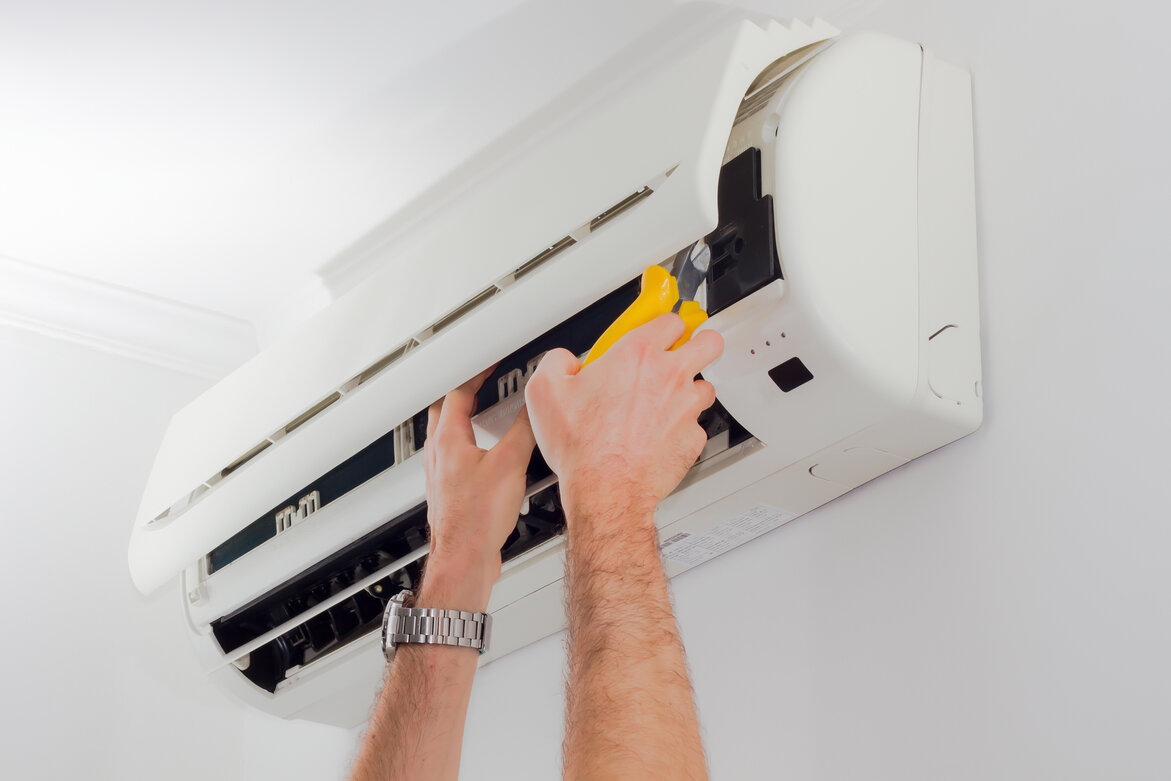Installing a new AC system is a big step for homeowners in Saint Johns. It’s not just about picking a unit and plugging it in. There are many details that influence how comfortable your home will be and how smoothly that system will run once it’s installed. Without proper planning, even the most advanced systems can underperform, resulting in warm spots, high energy bills, or early repairs.
That’s where a clear installation plan comes in. Good preparation helps homeowners avoid common problems, like choosing the wrong AC size or skipping key steps that leave the system working harder than it should. Whether you’re replacing an old unit or installing one for the first time, taking time to plan reduces headaches and sets up your system for long-term performance.
Assess Your Cooling Needs
Each home in Saint Johns cools differently. Factors such as floor layout, window direction, ceiling height, and insulation type all affect how much cooling a house needs. Picking an AC system without thinking through these variables can lead to uneven temperatures or unnecessary energy use.
One common issue homeowners face is buying a system that’s too big or too small. Bigger doesn’t always mean better. An oversized unit may cool the space fast but cycle on and off too frequently, wearing itself down. A smaller system, on the other hand, may never actually cool your home sufficiently, working overtime to keep up, which causes early breakdowns.
When we visit homes, we often notice cooling challenges tied to layout. For example, a two-story house with open features might need zoning or additional vents to evenly distribute cool air. These are things that should be considered early, not after installation is complete.
In addition to proper sizing and layout planning, homeowners should also think about energy efficiency. Systems with a better efficiency rating can bring down monthly energy costs while supporting long-term performance. It’s smart to explore different options before locking in a purchase, especially when you want the system to last in the humid summer months in Saint Johns.
Key points to review during the evaluation phase:
– Square footage of the home and daily usage patterns
– Whether indoor spaces are open-plan or sectioned
– Existing ductwork and its condition
– Insulation quality and sun exposure
– The number of people living in the home and their comfort preferences
Getting a clear picture of your actual cooling needs creates a strong starting point for everything that comes after.
Budgeting and Financing Options
Most homeowners start their AC project with a budget in mind, but there’s more to the cost than just the sticker price of the unit. Expenses like permits, new thermostats, or ductwork adjustments can catch families off guard if not reviewed early in the process. When building your plan, it helps to look at the full picture.
Start by comparing the cost of different systems, not just the upfront price but what it will cost over time. That includes energy usage, potential repairs, and tune-ups over the next several years. A lower-cost unit might look appealing at first, but could cost more through higher energy bills or frequent service needs.
Next, review payment or financing options available. Some homeowners prefer to spread payments out instead of paying everything up front. This approach can ease the financial pressure while making sure no corners are cut during installation. It also makes it easier to invest in models that offer upgrades—like better humidity control or quieter operation—that may otherwise be out of reach.
Lastly, setting money aside for regular maintenance is a big part of budgeting. Every AC system needs seasonal upkeep to run properly. Skipping maintenance may delay short-term costs, but tends to lead to bigger problems within a few years. Plan it out early, include it in your budget, and avoid scrambling later when something goes wrong.
Budget planning tips:
1. Compare system prices and ask about available upgrades.
2. Calculate long-term costs alongside the purchase price.
3. Look into payment plans that avoid draining savings accounts.
4. Ask about installation costs, including permits or parts.
5. Set aside a yearly amount for cleanings and system checks.
Choosing the right system goes beyond price tags. It’s about picking what works best for your home and finding a plan that fits into your comfort goals without overwhelming your finances.
Choosing the Right System and Features
Once the budget is set and cooling needs are clear, the next step is choosing an AC system that works best for your home in Saint Johns. It’s easy to assume that all cooling setups work the same, but different homes and lifestyles often demand different equipment.
Homeowners often choose between central AC systems and ductless mini-split systems. Central AC is common in homes with existing ductwork and is ideal for cooling entire houses evenly. It works well when the duct system is in good shape and properly sized for the home’s layout. On the other hand, ductless systems offer more flexibility and are perfect for homes without existing ducts or for rooms that need independent climate control. These systems also help if you’re dealing with a converted garage, sunroom, or upstairs bedroom that stays hot year-round.
After selecting the main system type, take some time to review added features that can improve comfort and efficiency:
– Smart thermostats: These provide better control and can help reduce energy waste. You can program settings or adjust them remotely from your phone.
– Zoned cooling: Useful in larger or multi-story homes, zone control lets you separately manage temperatures in different parts of your house.
– Air quality add-ons: Features like advanced air filters or humidity control can make a big difference for anyone with allergies, asthma, or just an overall desire for cleaner indoor air.
– Quiet operation technology: Some newer units are built for reduced noise, which is ideal for bedrooms or home offices.
It’s common for homeowners in Saint Johns to rush through these choices, only worrying about how fast a unit can cool the home. But that short-term thinking may lead to regret. Take time to explore the features that matter to your household routines. For example, if your family has different schedules or spends a lot of time upstairs during the day, zoning may become more important than initially expected.
Scheduling Installation and Preparation
Timing is everything when it comes to installing an AC system. In Saint Johns, demand for installation services spikes at certain times of the year, especially when temperatures rise. Planning your AC installation ahead of the busy season can help avoid long wait times and scheduling stress.
Once your system has been selected, consider the steps needed to prepare your home. A smooth installation process starts with making space around the work area and protecting your floors or furniture. Clearing out access paths to the attic, basement, or wherever system components will go reduces delays and allows our technicians to work more efficiently.
Here’s what to expect and prepare before installation day:
1. Determine the best time for installation based on local weather and work schedules.
2. Remove items that block access to vents, thermostats, or system components.
3. Arrange for pets or children to be in a safe space away from the work area.
4. Discuss any specific concerns you have with airflow or past equipment to help our technicians plan better.
5. Review and confirm any additional work that may be needed, such as duct updates or electrical adjustments.
During the installation, our technicians will carefully position the indoor and outdoor units, connect electrical components, charge the refrigerant lines if necessary, and test the system. The work may take a few hours to a full day depending on your home’s setup and any needed upgrades. Homeowners can stay informed by asking for updates and walking through the finished setup before the team leaves.
Clear expectations and preparation help the entire process move efficiently, with fewer interruptions or surprises that can delay your return to a comfortable indoor space.
Ensure the System’s Maintenance and Longevity
After your new AC is installed, keeping it in good shape becomes the next priority. No matter how new or advanced the system is, lack of maintenance will shorten its life and reduce its performance. For Saint Johns homes facing long humid summers, ignoring upkeep can result in premature wear and strain on the unit.
Start by setting up a recurring maintenance schedule. It’s often most effective to book system tune-ups before the season begins. That way, any developing problems—like low refrigerant, dirty coils, or loose electrical parts—can be handled before they lead to a breakdown.
In between visits, there are a few simple habits that can help protect your system:
– Replace air filters monthly or as directed to keep airflow strong.
– Keep the outdoor condenser unit clear of weeds, leaves, and grass clippings.
– Inspect and clean supply vents to prevent dust buildup.
– Check for changes in cooling performance, such as unusual sounds or uneven temperatures.
– Follow any specific care guidelines provided at installation to support warranty requirements.
A good routine doesn’t just avoid emergency issues. It keeps your AC system running smoothly, helps manage utility bills, and extends the useful life of parts like the compressor and fan motors.
It’s easy to forget about your AC once it starts working reliably, but regular checks are key. Avoid falling into the pattern of addressing issues only after something breaks. Preventive care is more affordable and far less stressful than emergency repairs during a summer heatwave.
Stay Comfortable With Efficient Planning
Installing a new AC system in your Saint Johns home can be simple when each step is planned carefully. From understanding your home’s layout to comparing AC features and preparing for installation day, thoughtful decisions now pay off year after year. With the right system and routine care, you avoid wasted energy, equipment strain, and last-minute frustration.
The earlier planning starts, the smoother the process becomes. Homes that have an installation timeline, budget expectations, and clear cooling goals generally avoid the pitfalls that lead to regret or added expense. Cooling your home shouldn’t feel like a gamble. A well-planned approach makes sure your system delivers consistent comfort, even during the hottest parts of the season.
If you’re ready to improve your home’s indoor comfort with expert AC installation in Saint Johns tailored to your specific cooling needs, Chills on Wheels Heating & Air Contractors, Inc. is here to guide you through every step of the process. For a quick estimate or to book a service visit, please contact us today.




